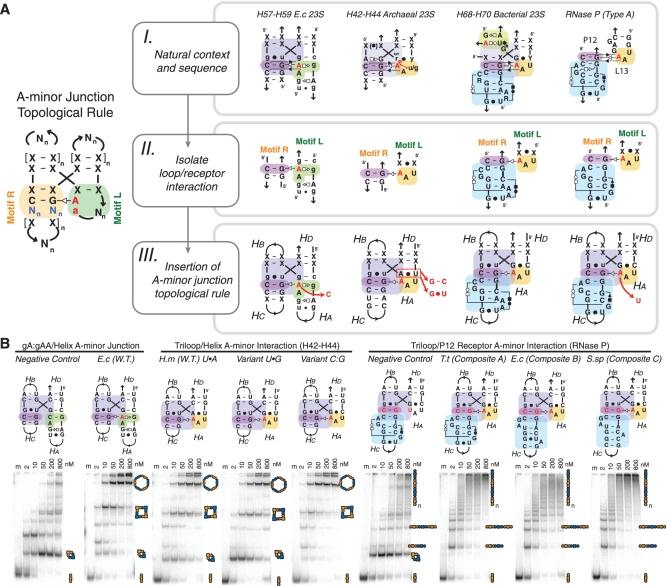Figure 5.
A-minor junction motif structural variants. (A) Scheme describing the engineering of new motifs fitting the A-minor-junction topological rule. (I) Examples of A-minor motifs as they appear in their natural context. Consensus sequences are shown for region H42–H44 of archaea and region H68–H70 of bacteria. (II) Isolation of the loop/receptor interaction from the natural motif. The interaction (left to right) are gA:gAA/helix interaction, triloop/helix interaction, triloop/H68–receptor interaction and L13-loop/P12–receptor interaction. (III) Insertion of the loop/receptor interaction in the context of the A-minor-junction topological rule. Red arrows indicate different mutants that are experimentally tested in (B). (B) Native PAGE at 1 mM Mg(OAc)2 and TB 1×buffer showing the end-to-end assembly of tectoRNAs containing the different 4WJ sequence signatures shown in (A). Negative controls expected to form cyclic dimers are indicated. PAGE gels were conducted under the same conditions as those presented in Figure 3A. W.T., wild type; 23S, 23S rRNA; E.c, E. coli; H.m, H. marismortui; T.t, T. thermophilus; S.sp, Synechococcus sp. PCC6301.

